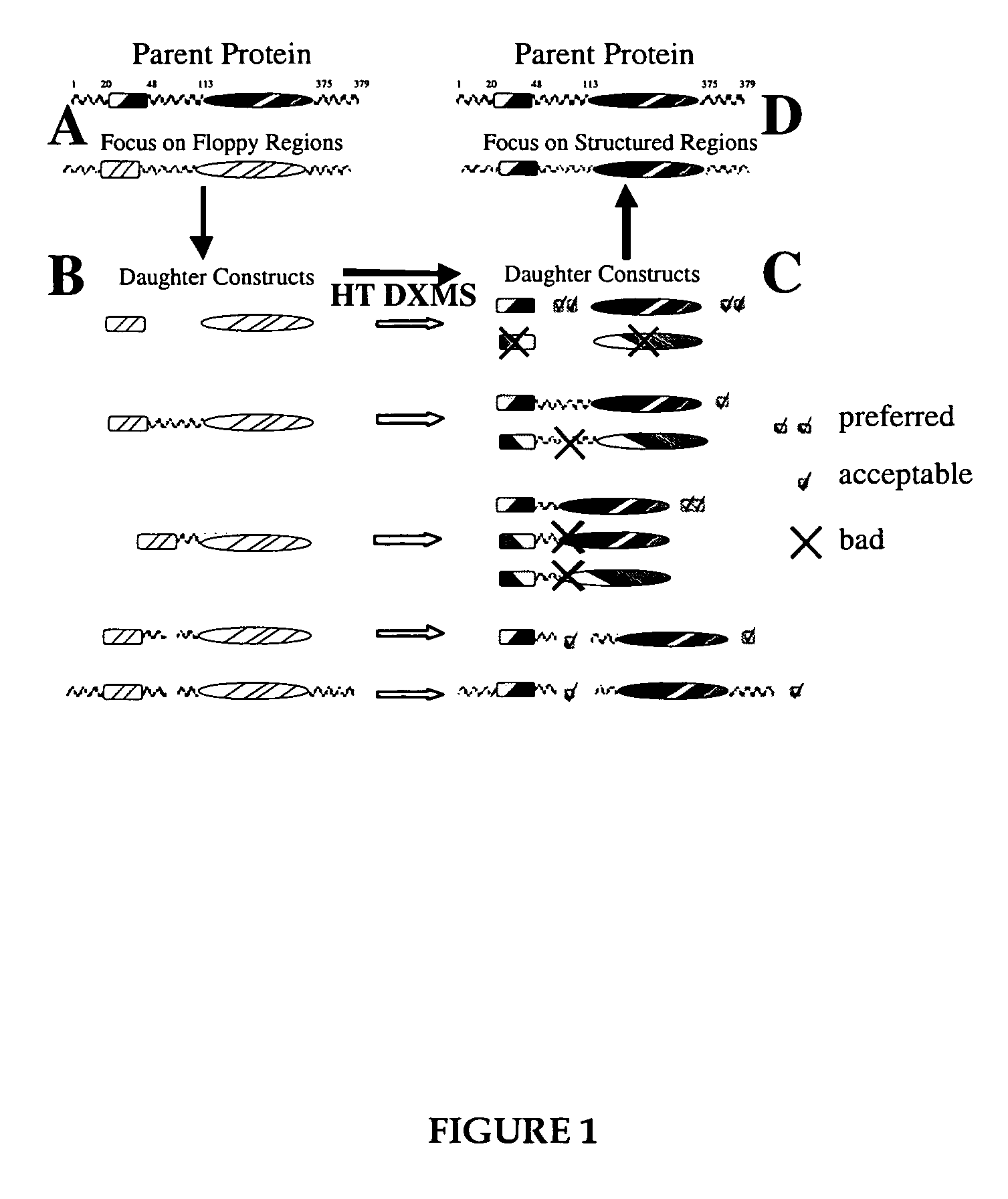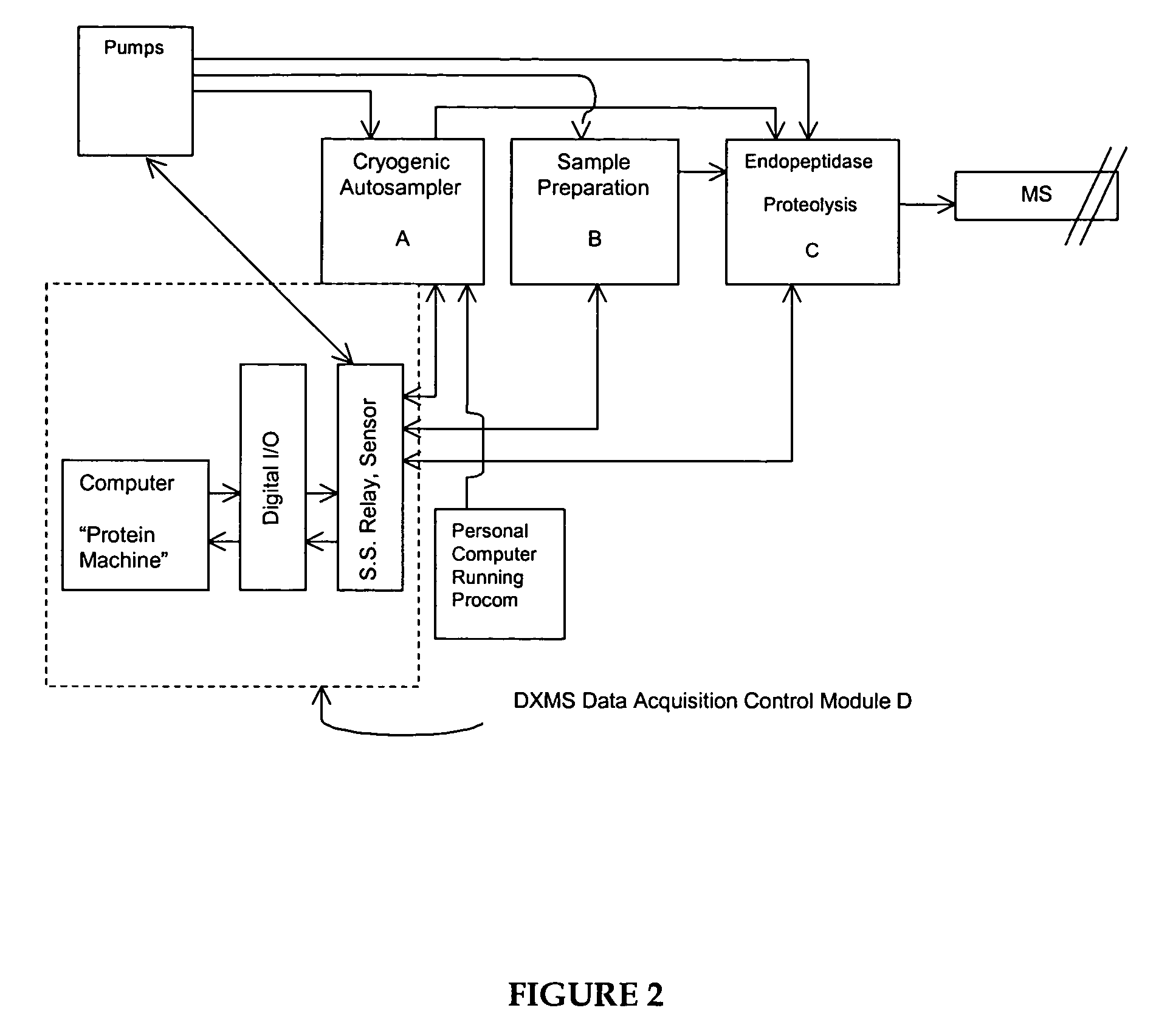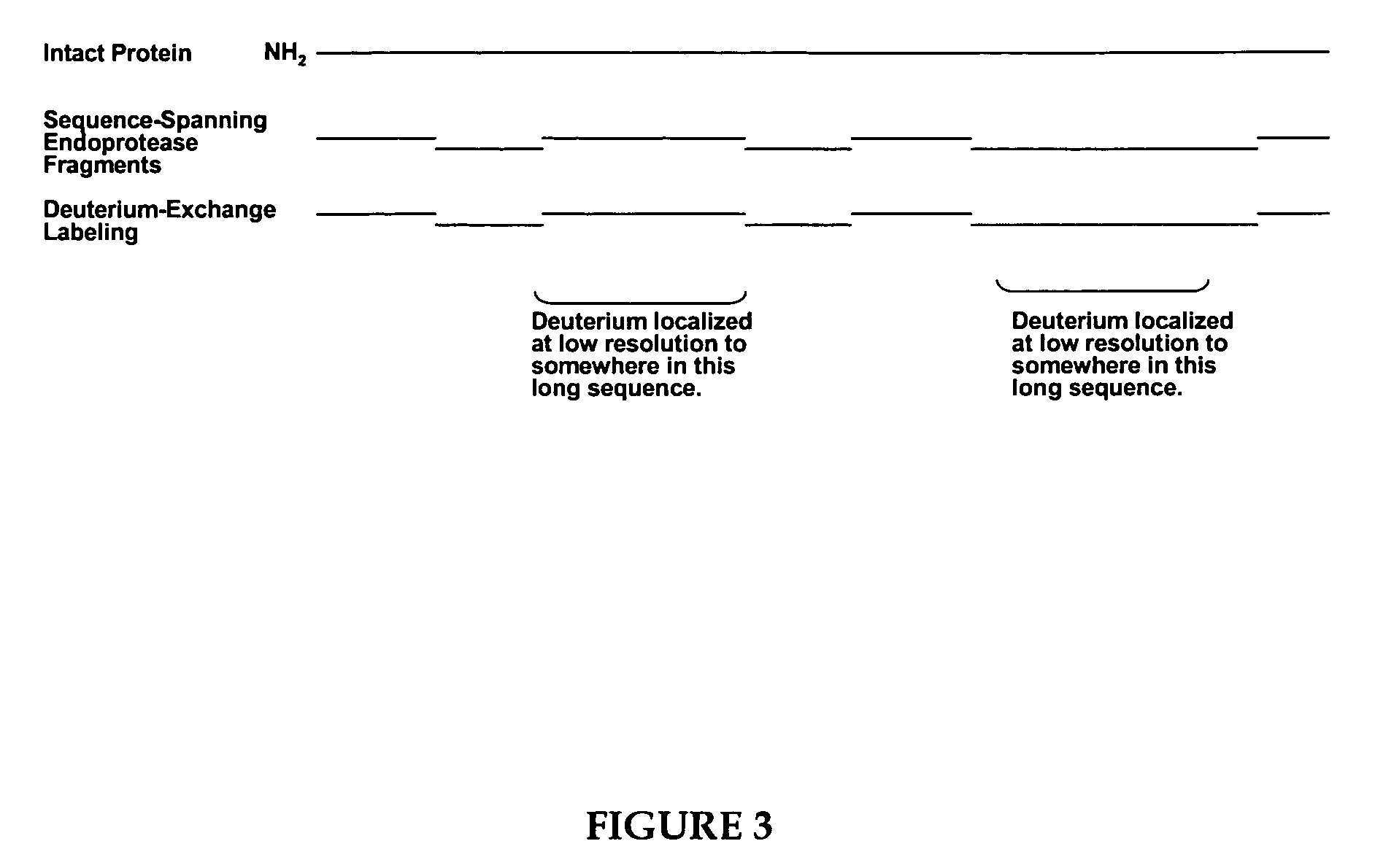Methods for crystallographic structure determination employing hydrogen exchange analysis
a technology of hydrogen exchange analysis and crystallography, which is applied in chemical methods analysis, material analysis using wave/particle radiation, instruments, etc., can solve the problems of insufficient time for study, inability to accurately characterize the three-dimensional structure of polypeptides, and inability to accurately characterize the critical structural features. , to achieve the effect of simplification of protein fragmentation methods and high resolution
- Summary
- Abstract
- Description
- Claims
- Application Information
AI Technical Summary
Benefits of technology
Problems solved by technology
Method used
Image
Examples
example 1
DXMS Analysis used to Elucidate Phosphorylation-Driven Motions in the COOH-Terminal Src Kinase Csk
A. Background.
[0241]The Src family of nonreceptor protein tyrosine kinases (nrPTKs) bind to receptor protein tyrosine kinases (PTKs) where they phosphorylate down-stream protein targets associated with discrete signaling pathways (Superti-Furga and Courtneidge, Bioessays, 17:321-330, 1995; Neet and Hunter, Genes Cells 1:147-169, 1996; and Tatosyan and Mizenina, Biochemistry 64:49-58, 2000). While the Src enzymes comprise a large subfamily of nrPTKs, all are regulated through a single nrPTK, Csk (COOH terminal Src kinase). Csk down-regulates kinase activity by phosphorylating a single tyrosine residue in the C-terminus of the Src enzymes (Okada et al., J. Biol. Chem. 266:24249-24252, 1991; and Bergman et al., EMBO J. 11:2919-2924, 1992). Owing to this premier regulatory function, Csk has direct effects on many biological functions including T cell activation, neuronal development, cytosk...
example 2
DXMS Analysis used to Elucidate the Effects of cAMP and Catalytic Subunit Binding on cAPK Type IIβ Solvent Accessibility
A. Background.
[0254]A myriad of physiological processes are controlled by the stimulatory effects of cAMP on cAMP-dependent protein kinase (cAPK). The regulatory (R) subunits of cAPK serve as negative regulators of cAPK, as the inactive kinase exists as a tetramer composed of an R-subunit dimer bound to two catalytic (C) subunits. Binding of two cAMP molecules to each R-subunit causes dissociation of the holoenzyme complex and releases an active C-subunit. The R-subunits are known to exist in either one of two physiological states: in complex with the C-subunit or free and cAMP-saturated. A cAMP-free and C-subunit free state is believed to only exist transiently following translation due to the high affinity for cAMP and the intracellular cAMP concentrations.
[0255]Two general classes of R-subunits, type I and type II, are known to exist and differ by autophosphoryl...
example 3
DXMS Analysis Used to Refine Structure Determinations
[0282]DXMS analysis was attempted on the twenty-four Thermotoga maritima proteins listed below in Table 2, which exhibited either different degrees of resistance to crystallization or formed crystals that did not diffract X-rays sufficient for structure determination.
[0283]
TABLE 2T. maritima proteinsDid not crystallizeTIGR_description,MolecularTIGR_TMACnearest homolog.WeightLengthTM0212glycine cleavage system H protein13914.56124(gcvH) {Escherichia coli}cTM0855ribosome binding factor A15546.89131{Stigmatella aurantiaca}TM1171transcriptional regulator, crp family23394.46201{Pseudomonas stutzeri}TM1706transcription elongation factor,17848.31156greA / greB family {Bacillussubtilis}TM0160conserved hypothetical protein20551.31181{Aquifex aeolicus}TM1773conserved hypothetical protein63642.64538{Methanococcus jannaschii}Gave few crystalsMolecularTIGR_TMACTIGR_descriptionWeightLengthTM0913mazG protein {Haemophilus29804.83255influenzae}TM181...
PUM
| Property | Measurement | Unit |
|---|---|---|
| pH | aaaaa | aaaaa |
| cold temperature | aaaaa | aaaaa |
| pH | aaaaa | aaaaa |
Abstract
Description
Claims
Application Information
 Login to View More
Login to View More - R&D
- Intellectual Property
- Life Sciences
- Materials
- Tech Scout
- Unparalleled Data Quality
- Higher Quality Content
- 60% Fewer Hallucinations
Browse by: Latest US Patents, China's latest patents, Technical Efficacy Thesaurus, Application Domain, Technology Topic, Popular Technical Reports.
© 2025 PatSnap. All rights reserved.Legal|Privacy policy|Modern Slavery Act Transparency Statement|Sitemap|About US| Contact US: help@patsnap.com



